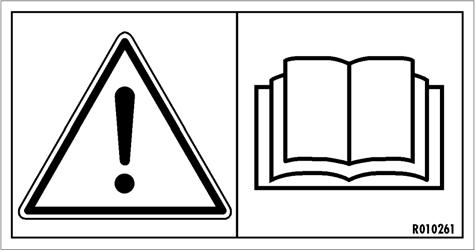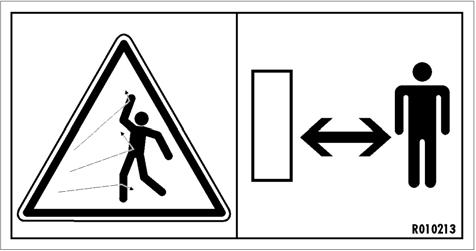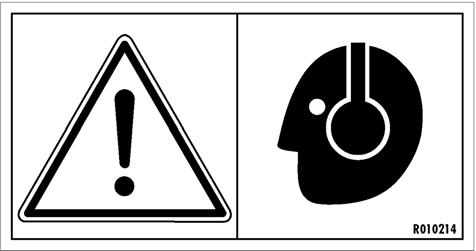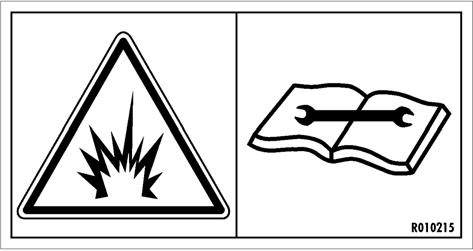
6 minute read
4. Safety
SAFETY
GENERAL SAFETY
All mechanical equipment can be hazardous if operated without due care or correct maintenance. Most accidents involving machine operation and maintenance are caused by failure to observe basic safety rules or precautions. An accident can often be avoided by recognizing potentially hazardous situations before an accident occurs. Because it is impossible to anticipate every possible circumstance that might involve a potential hazard, the warnings in this guide and on the machine are not all inclusive. If a procedure, tool, working method or operating technique not specifically recommended by manufacturer is used, you must satisfy yourself that it is safe for you and others. You should also ensure that the product will not be damaged or made unsafe by the method of operation or maintenance procedures you choose. Safety is not just a matter of responding to the warnings. All the time you are working with your attachment you must pay attention to what hazards there might be and how to avoid them. Do not work with the product until you are sure that you control it. Do not start any job until you are sure that you and those around you will be safe.
Warning! Read the following warning messages carefully. They tell you of different hazards and how to avoid them. If proper precautions are not taken you or others could be seriously injured.
SAFETY INSTRUCTIONS
Manuals
Study this manual before installing, operating or maintaining the product. If there is anything you don't understand, ask your employer or your local dealer to explain it. Keep this manual clean and in good condition.
Study also the operating and maintenance manual of your carrier before operating the attachment.
Care and alertness
All the time you are working with the product, take care and stay alert. Always be careful. Always be alert for hazards. The possibility of a serious or even fatal accident is increased when you are intoxicated.
Clothing
You can be injured if you do not wear proper clothing. Loose clothing can get caught in the machinery. Wear protective clothing to suit the job. Examples are: a safety helmet, safety shoes, safety glasses, well-fitting overalls, ear-protectors and industrial gloves. Keep cuffs fastened. Do not wear a necktie or scarf. Keep long hair restrained.
Practice
You and others can be killed or injured if you perform unfamiliar operations without practising them first. Practice away from the job site, in a clear area. Keep other people away. Do not perform new operations until you are sure you can do them safely.
Regulations and laws
Obey all laws, work site and local regulations which affect you and your equipment.
Communications
Bad communications can cause accidents. Keep people around you informed of what you will be doing. If you will be working with other people make sure they understand any hand signals you will be using. Work sites can be noisy. Do not rely only on spoken commands.
Work site
Work sites can be hazardous. Inspect the site before working on it. Check for potholes, weak ground, hidden rocks etc. Check for utilities (electric cables, gas and water pipes etc.). Mark the positions of underground cables and pipes if you will be breaking the ground. Poor visibility can cause accidents and damage. Make sure that visibility and lightning of the working area are adequate.
Banks and trenches
Banked material and trenches can collapse. Do not work too close to banks and trenches where there is a danger of collapse.
Safety barriers
Unguarded equipment in public places can be dangerous. Place barriers around the machine to keep people away.
Flying chips of rock

Protect yourself and your neighbourhood against flying chips of rock. Do not operate the product or carrier if someone is too close. Keep the cabin windows and doors closed during operation. Window bars are recommended to protect the windows from flying chips of rock.
High noise level

High noise level. Wear ear protection to prevent personal injury.
Equipment limits
Operating the product beyond its design limits can cause damage. It can also be dangerous. See “Hammer specifications” on page 44. Do not try to enhance the product's performance by unapproved modifications.
Hydraulic fluid
Fine jets of hydraulic fluid at high pressure can penetrate the skin. Do not use your fingers to check for hydraulic fluid leaks. Do not put your face close to suspected leaks. Hold a piece of cardboard close to suspected leaks and then inspect the cardboard for signs of hydraulic fluid. If hydraulic fluid penetrates your skin seek medical help immediately. Hot hydraulic fluid can cause severe injuries.
Hydraulic hoses and fittings
Ensure all hydraulic components will withstand maximum pressure and mechanical stresses caused by operation of the attachment. Consult your local dealer for instructions.
Fire hazard
Most hydraulic fluids are flammable and might ignite when contacting hot surface. Avoid spilling hydraulic fluid to hot surfaces. Working with the product on certain materials can cause sparks and hot splinters to get loose. These can ignite flammable materials around working area. Ensure that adequate extinguisher is available.
Hydraulic pressure
Hydraulic fluid at system pressure can injure you. Before disconnecting or connecting hydraulic hoses, stop the carrier engine, operate the controls to release pressure trapped in the hoses and wait ten (10) minutes. During the operation, keep people away from the hydraulic hoses. There might be pressurized oil trapped inside the product even if it is disconnected from the carrier. Be aware of possible blank firing while greasing or removing and installing hammer tools. See “Removal of tool” on page 35.
Pressure accumulators

The hammer incorporates one or two pressure accumulators, depending on the model. The accumulators are pressurized even when there is no hydraulic pressure to the hammer. Attempting to dismantle the accumulators without first releasing the pressure can cause injury or death. Do not try to dismantle pressure accumulators, contact your local dealer first. See “Releasing hydraulic pressure from hammer” on page 49.
Lifting equipment
You can be injured if you use faulty lifting equipment. Make sure that lifting equipment is in good condition. Make sure that the lifting tackle complies with all local regulations and is suitable for the job. Make sure that the lifting equipment is strong enough for the job and you know how to use it. Do not use this product or any of its parts for lifting. See “Lifting instructions” on page 7. Contact your carrier dealer to find out how to lift with your carrier.
Spare parts
Use only genuine spare parts. Use only genuine tools with hydraulic hammers. The use of other spare part or hammer tool brands may damage the product.
Equipment condition
Defective equipment can injure you or others. Do not operate equipment which is defective or has missing parts. Make sure the maintenance procedures in this manual are completed before using the product.
Repairs and maintenance
Do not try to do repairs or any other maintenance work you do not understand.
Modifications and welding
Non-approved modifications can cause injury and damage. Contact your local dealer for advice before modifying the product. Before welding on the product while it is installed on the carrier, disconnect the carrier alternator and battery. Note that welding of the hammer tools will render them useless and make the warranty void.
Metal splinters
You can be injured by flying splinters when driving metal pins in and out. Use soft-faced hammer or drifts to remove and fit metal pins, such as pivot pins. Always wear safety glasses.





